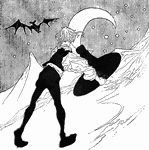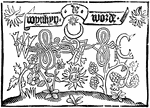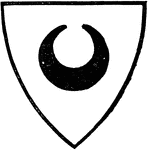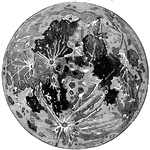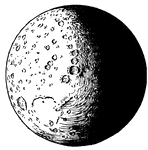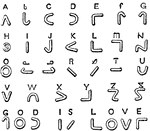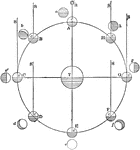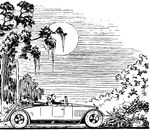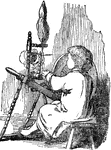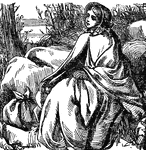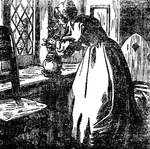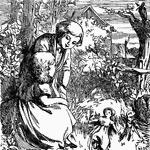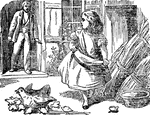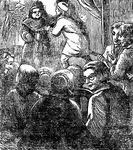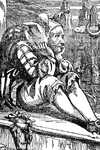Clipart tagged: ‘moon’
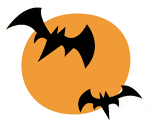
Bats over the moon
A simple illustration of bats flying out into the night over a pumpkin orange moon. Illustrated by James…
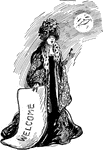
Cartoon of Woman Holding Welcome Mat
A cartoon of a woman holding a welcome mat in one hand, and a key in the other hand.
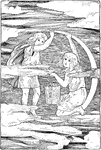
Children in the Moon
In Norse mythology, Mani drives the moon chariot at night. He finds a boy and a girl carrying a pail…
Diminish Shadow
"Since A is producing light and larger than object B, the shadow of B continuously shrinks to a single…
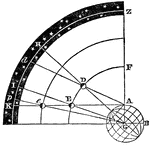
Diurnal Parallax
"If we suppose a spectator placed at G, in the Earth's center, he would see the moon E, among the stars…
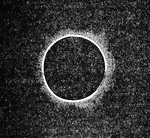
Eclipse
"An Eclipse is an interception or obscuration of the light of the sun, moon, or other heavenly body…

Elves and Fairies Dancing
According to Norse mythology, in Elfland, elves and fairies would dance in a circle in the moonlight.…

Fighting Temeraire
This painting by J. William Turner is a prime example of the style and technique that he often used.…
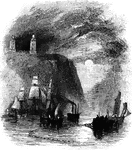
Light-Towers of the Heve
The romantisit, J. William Turner, was famous for his drawings of landscapes such as: lakes, castles,…

Man Reaching Towards Moon
An illustration of a man standing on a pile reaching towards the moon with a cane.

Medal of Gebal
The only medal known to inscribe the name of the town. It depicts a crab, which holds in its claws the…

Moon
The satellite of the earth, and classed as one of the secondary planets. It revolves around the earth…

Moon Decrescent
"Azure, a moon decrescent, proper. DECRESSANT, or DECRESCENT. A moon in its wane, whose horns are turned…
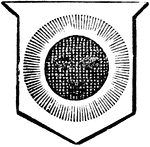
Moon Detriment
"Argent, the moon in her detriment sable. DETRIMENT. The moon is said to be in its detriment when it…
Moon Eclipse
"When the Moon falls into the shadow of the Earth, the rays of the Sun are intercepted, or hid from…
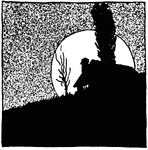
Moon in the Horizon Illuminating a House
An illustration of the moon in the horizon illuminating a house.

Moon Phases
"Let S be the Sun, E the Earth, and A, B, C, D, F, the Moon in different parts of her orbit. Now when…
Neap Tides
"The elevation of the tides at c and d is produced by the causes already explained; but their elevation…

Reynard the Fox: Tricking Tibert
Tibert the cat is caught in a trap. Reynard the Fox tells Tibert that he can find many mice to eat in…
Sun Eclipse
"When the moon psses between the Earth and Sun, there happens an eclipse of the Sun, because then the…
Tides
"Let m be the Moon, and E the Earth covered with water. As the Moon passes round the Earth, its solid…
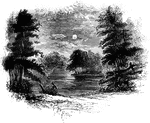
Trading Ford
"Trading Ford. This view of the Trading Ford, where greene, with Morgan and his light troops, crossed…
Umbra
"Umbra and Penumbra. A solar eclipse, with the penumbra, d, c, and the umbra or dark shadow is seen…

A Child's Garden of Verse
This is an illustration by artist Charles Robinson. It is found in novelist Robert Louis Stevenson's…
